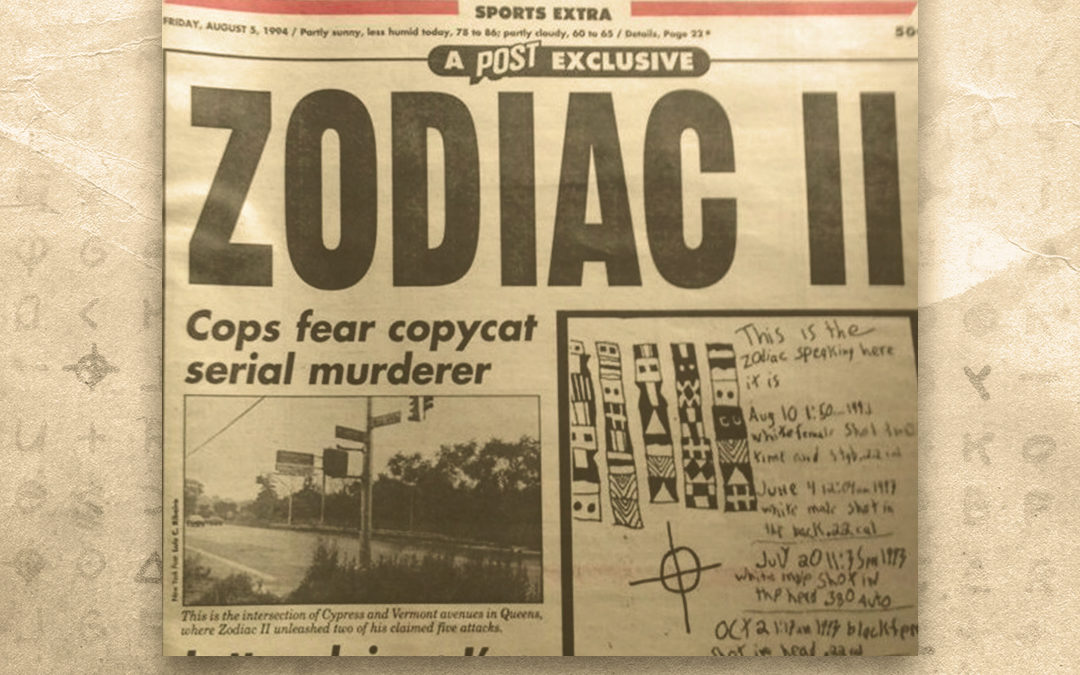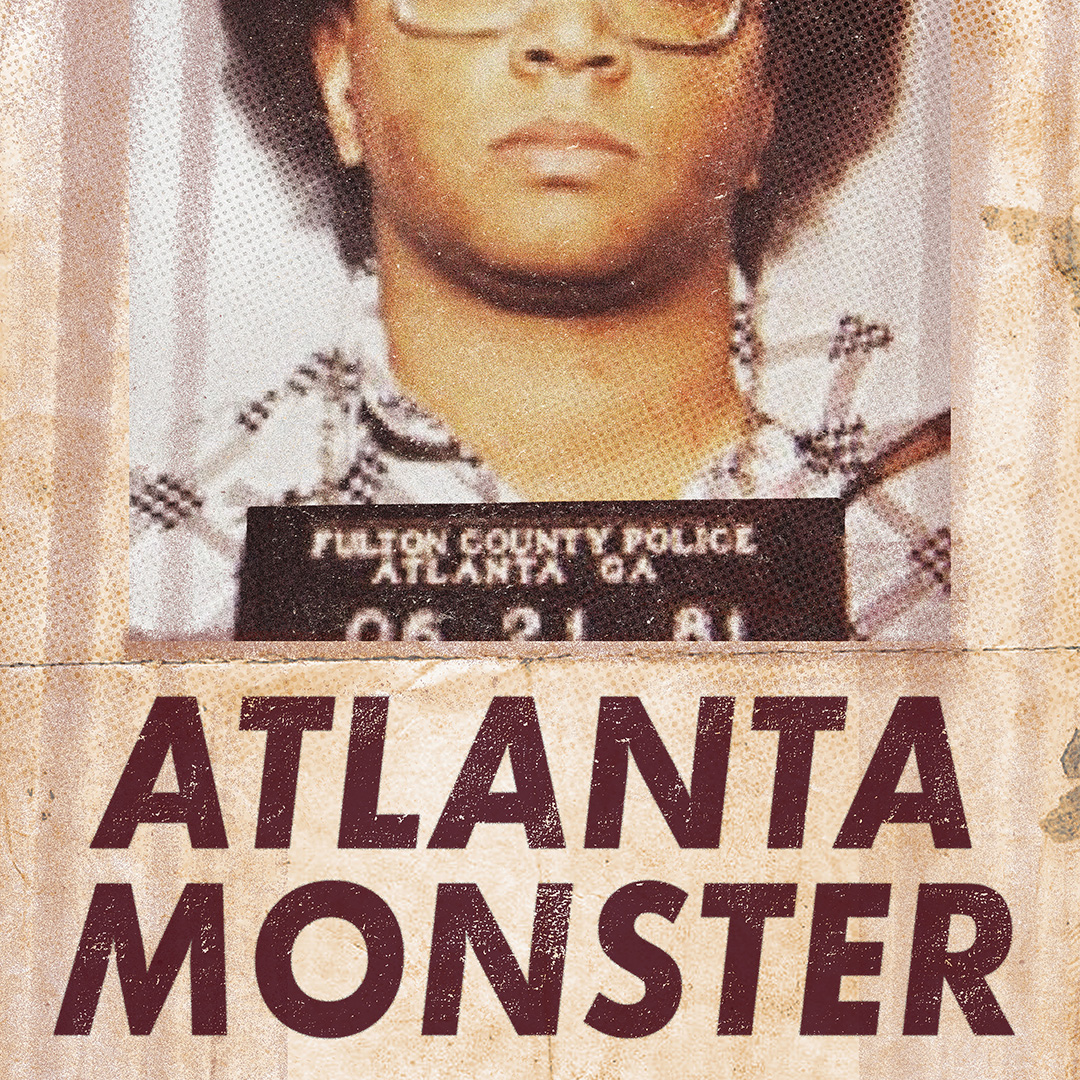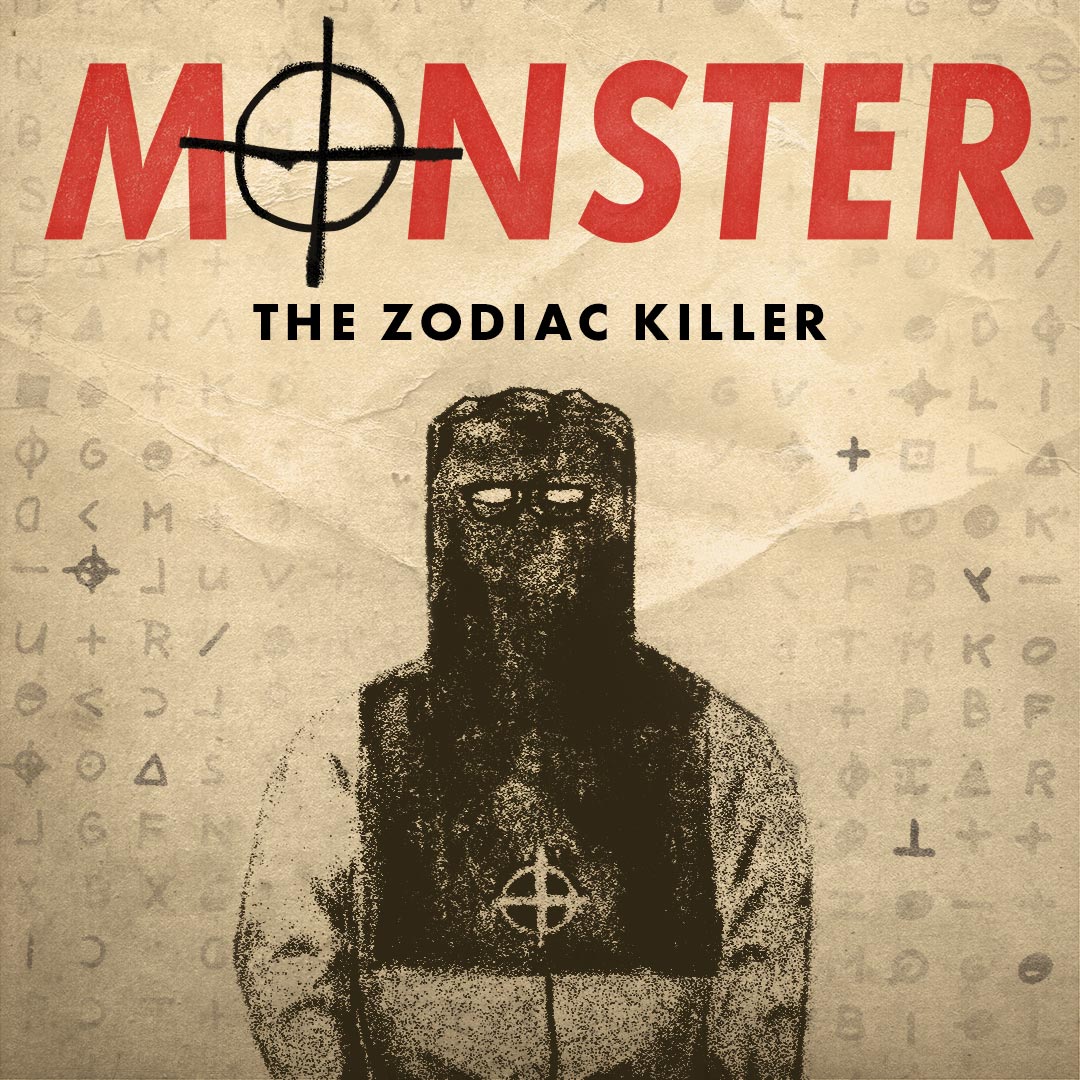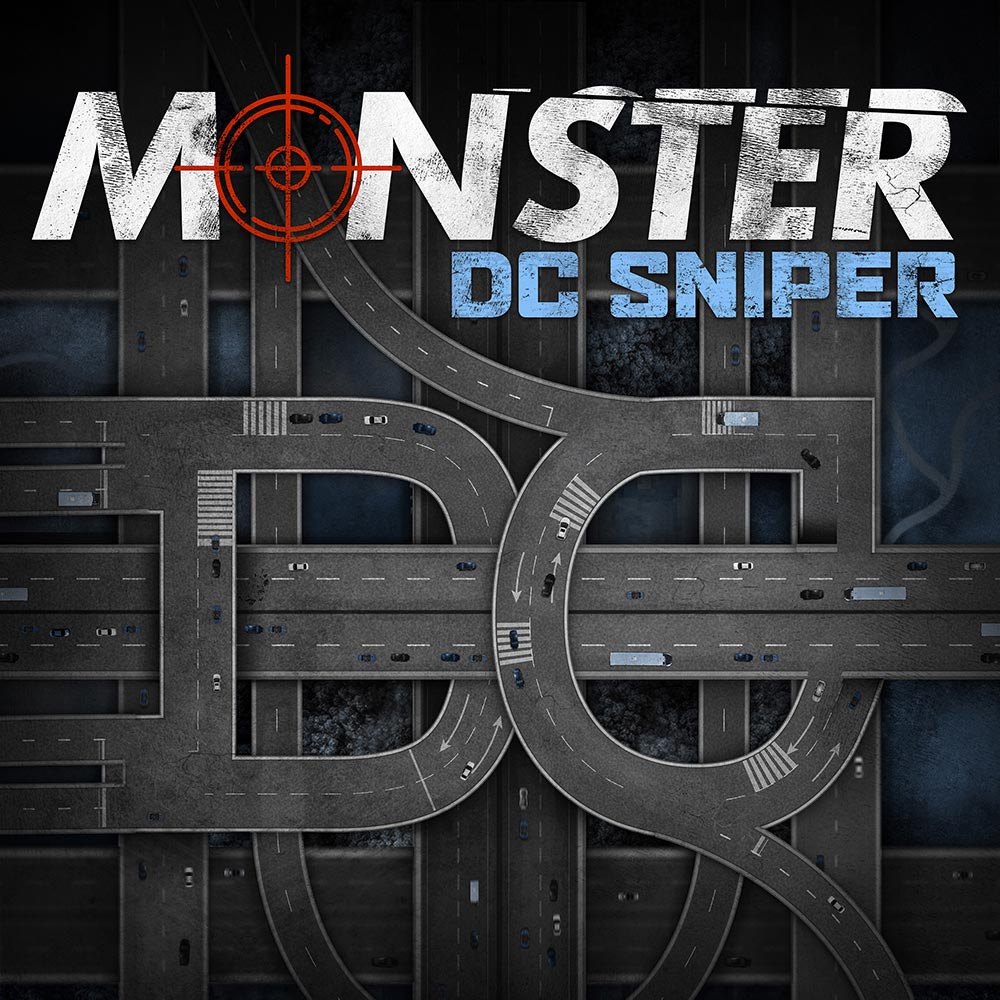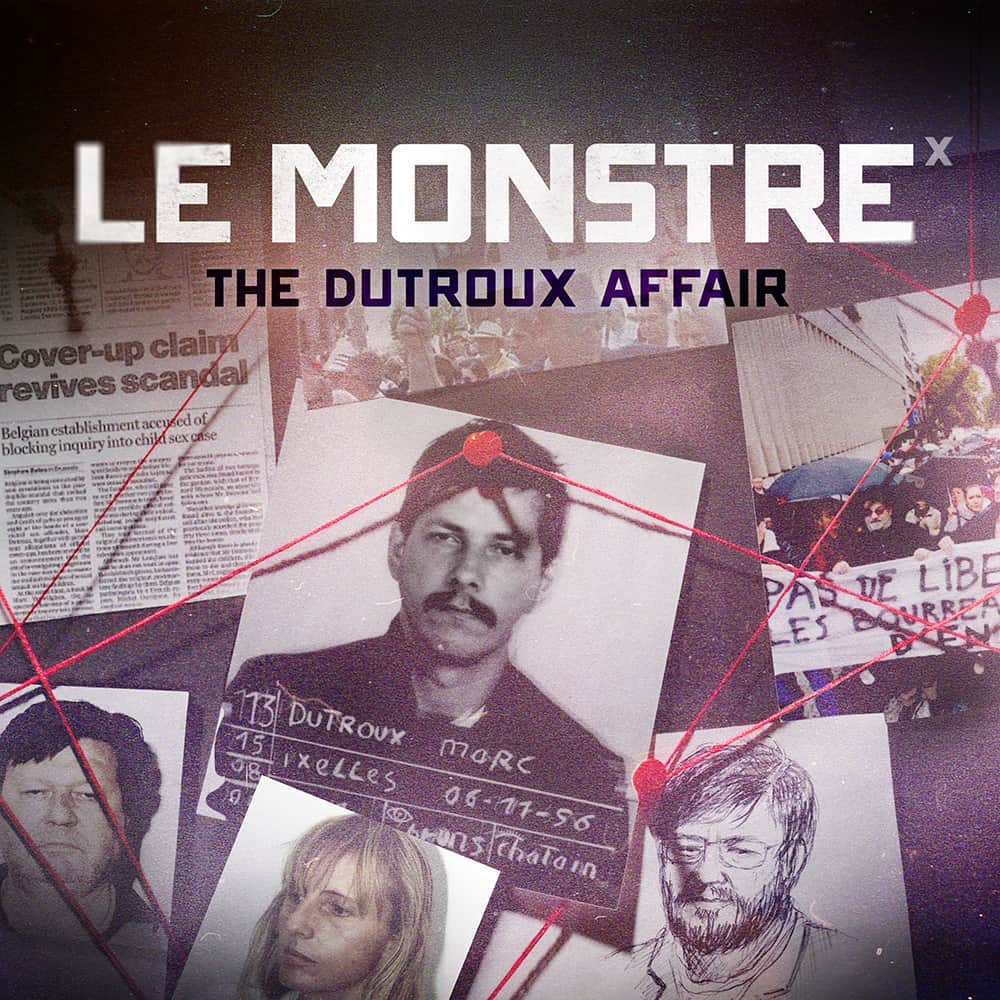13 • Copycat
Fascination leads beyond obsession, as a new Zodiac emerges in New York City.
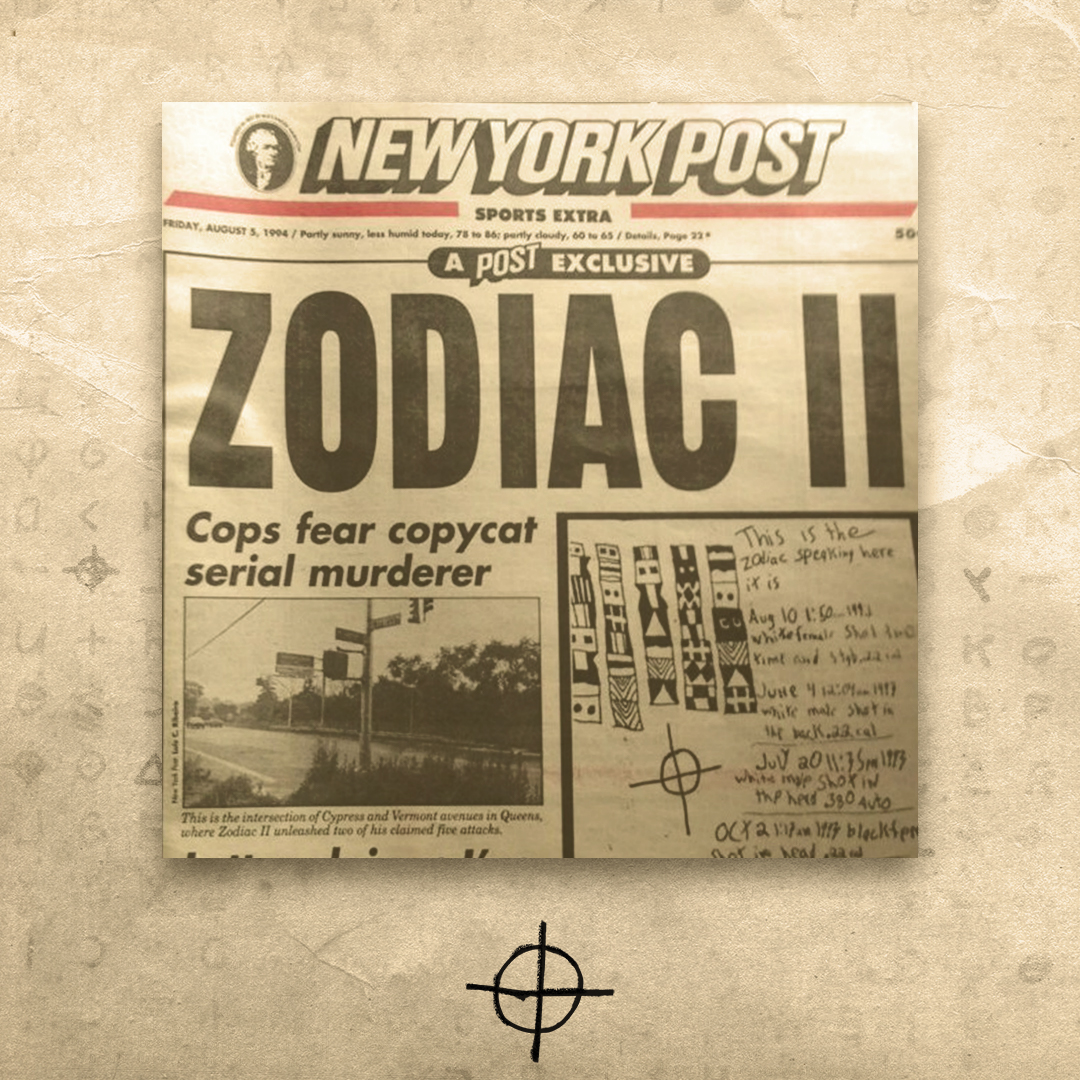
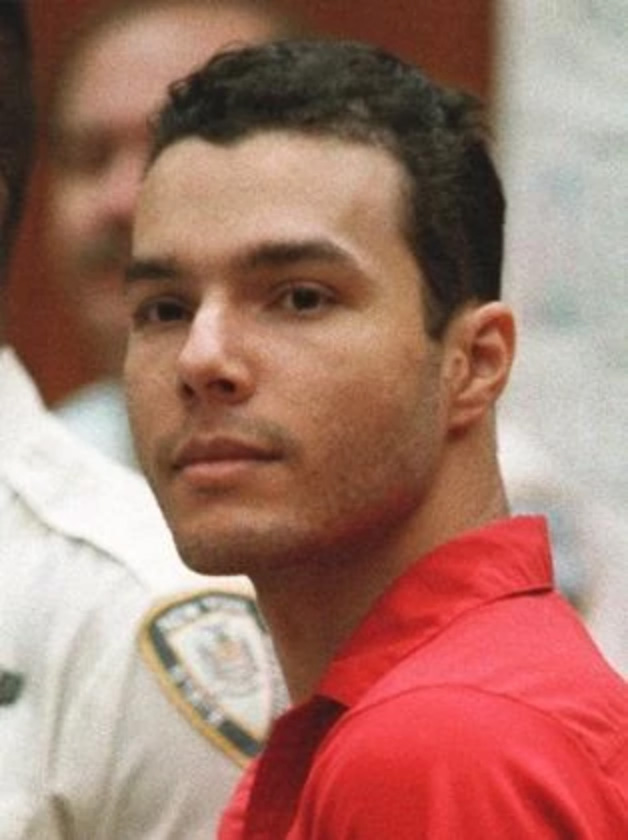
So, I get there, that shooting had stopped. Emergency services had set me up behind a barricade, and I have a bull horn, and I start trying to communicate with him. It was 110 degrees, it was a very hot day, sweating like a dog, and I’m trying to engage him in conversation, and all he’s doing is coming to the window, he’s pointing a large barrel rifle at me, but he doesn’t fire at me, and he’s not communicating to me, he’s not talking to me.
– Joseph Herbert, Retired deputy chief, New York City Police Department
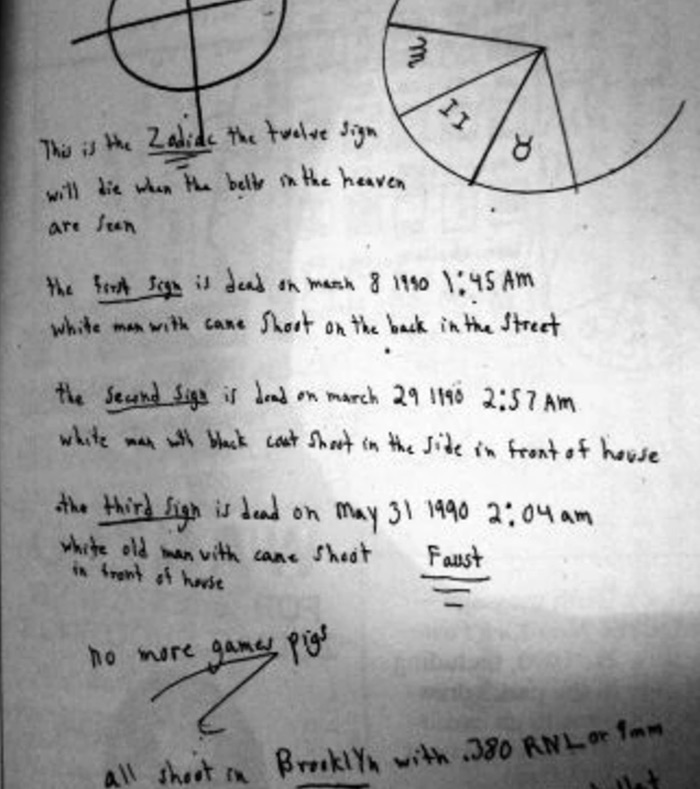
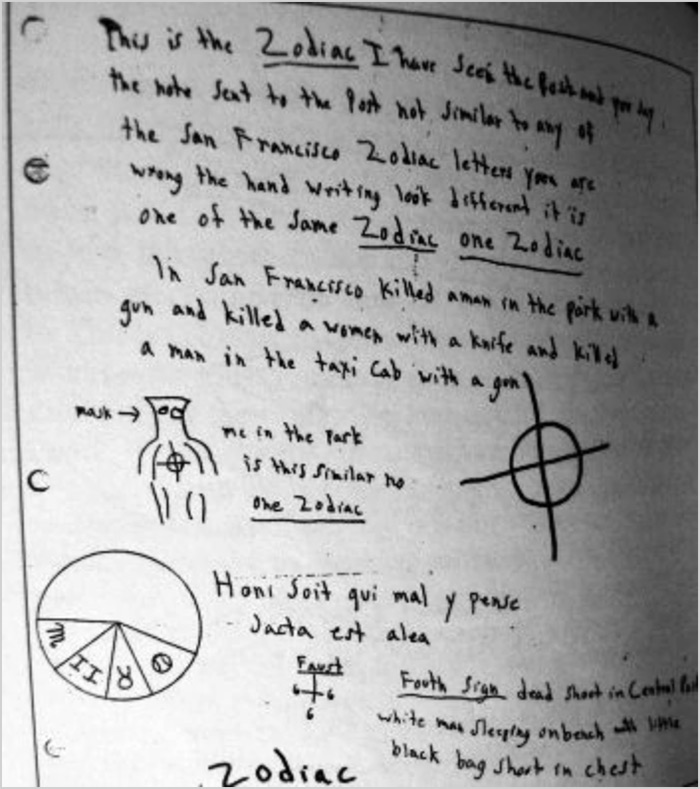
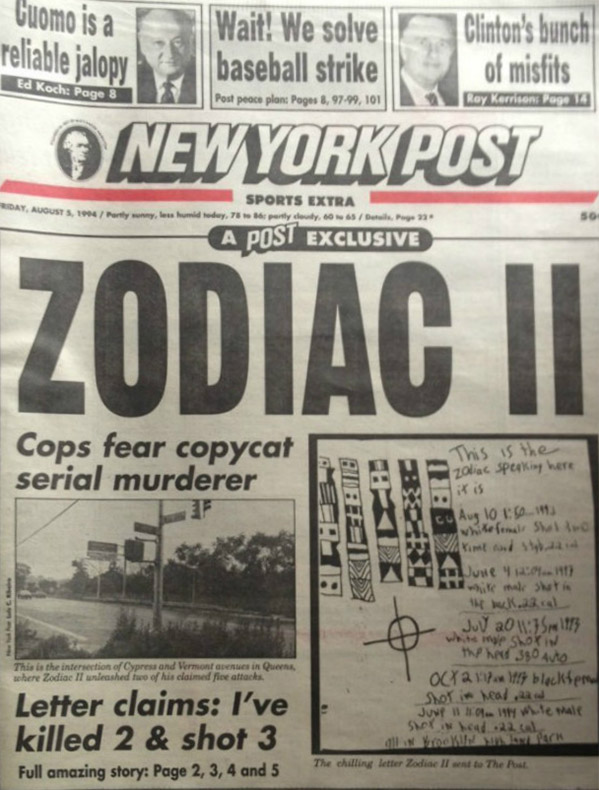
The Zodiac had succeeded in putting fear into the citizens of New York. The NYPD began to ramp up in reaction to the killings, even forming a task force specifically for the case. It was the biggest manhunt in New York since the Son of Sam killings in 1976.
– Matt Frederick, host of Monster: The Zodiac Killer
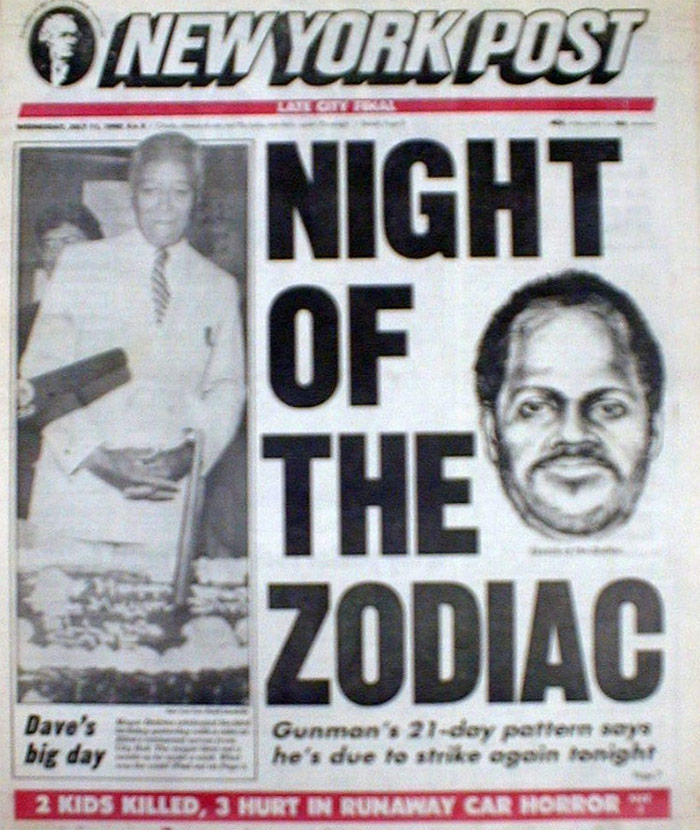
There was a lot of havoc and a lot of chaos in the city at the time because the Post was getting the letters, and they were producing headlines, and that was putting a lot of fear into the city.
Transcript
Narrator: The views and opinions expressed in this podcast are solely those of the podcast author or individuals participating in the podcast and do not necessarily represent those of iHeart Media, Stuff Media, or its employees.
Narrator: On the 50th anniversary of the Zodiac’s first confirmed killings in Benicia, a group of self-proclaimed Zodiologists visited the site on Lake Herman Road. They went there to pay homage to the victims David Faraday and Betty Lou Jensen. Days earlier, a threat was made to harm anyone who showed up at the Lake Herman site on the anniversary. The Zodiologists decided to go anyway, and we joined them.
Male: We’re gonna park on the other side.
Male: Yeah.
Male: I know there were threats made for people who came here tonight. What do we have, about 20, 25 people here right now? Over the next half hour, I expect maybe another dozen people or more coming here, though I know there are other people who would be here tonight if those threats had not been made. People who want to be here and remember the anniversary, and remember David and Betty Lou.
Male: Nice.
Male: She did.
Male: Nice.
Female: Yeah, they said to rest in peace Betty Lou, and rest in peace David A.F.
Female: You’re looking at crosses. Where would be a good place to have them sit for a while?
Male: Right now, right there.
Male: I came up here. I drove up here. I didn’t know if anybody was going to be here because of that threat about a shooting or something like that. I said I’m going to drive up here anyway. I’ll take my chances.
Male: I was really interested to see a police officer here from the Benicia Police Department. About 20 people who came over here, none of us going to cause any problems, but we have no idea who else is going to be here this evening. There will quite likely be a number of other cars of people that we don’t know that will show up.
Corporal Cruz: I’m Corporal Cruz with the Benicia Police Department. We’re here because of the 50th anniversary of the Zodiac killing. We’re just here for extra patrol, and just make sure that everyone that comes here wants to be here, and stays safe.
Male: What makes you wonder is how the Zodiac … I mean, did he trail them out here, or did he find them by accident? Where was the car parked?
Female: It was parked about where the taller of the arrow signs right there, headed right towards that.
Male: Headed this way?
Female: Yeah.
Male: Okay. I know they showed the crime scene photos, but you can’t …
Female: It gets hard to orient.
Male: You can’t tell, yeah. Were they back in there?
Female: Huh?
Male: Were they back up there?
Female: No, they were …
Male: Facing us?
Female: Yeah.
Male: Oh, okay.
Female: I think David was found out … This is Tom’s territory, but I think he was found outside the passenger side door because he tried to get away, and she had gotten out and gotten somewhere.
Male: She got down here somewhere I understand, yeah.
Female: And he was killed right there.
Male: It’s been a real treat to hang out with other Zodiologists and talk about the anniversary. This being the 50th anniversary is kind of a sobering time. 50 years ago today, there was a couple who was holding hands and kissing in the front seat of a station wagon. About an hour from now, less than an hour from now, we will commemorate the time that they were shot dead for no purpose, apparently, and the perpetrator has still not been identified or brought to justice.
continue reading
Reporter: A man in a mask robbed, tied, and stabbed them, leaving them for dead.
Reporter: Subject stated “I want to report a murder. No, a double murder. I did it.”
Reporter: A man who wore a medieval-style executioner’s hood carried a knife and gun and intended to use them.
Speaker 1: They haven’t arrested me because they can’t prove a thing! I’m not the damn Zodiac!
Reporter: Who is the Zodiac and where is he?
Narrator: From iHeart Radio, How Stuff Works, and Tenderfoot TV, this is Monster: The Zodiac Killer.
Narrator: They say imitation is the highest form of flattery, and if that’s true, the Zodiac may have had some admirers. By now, you’ve heard about the range of murder weapons and all the other inconsistencies between the Zodiac killings. In this episode, we’ll see double. Confronting the unpleasant idea of a Zodiac copycat. Unspeakable evil is one thing, but consciously replicating that evil, that may be worse.
Rachel Raskin-Z: There are people who are totally wrapped up. They don’t celebrate, but they commemorate every anniversary of these murders. People they never met, they didn’t know.
Narrator: That’s Rachel Raskin-Zrihen, who you heard on last week’s episode. She’s a reporter at the Times-Herald in Vallejo, a paper that’s been involved with the case since the very beginning.
Rachel Raskin-Z: What’s funny is the people who did know the people who this happened to don’t do that. I haven’t met one that does that. They may remember it in their head, but they don’t go to the site in the middle of the night. Why would you have a fan club for something like a serial killer? I guess it’s not unusual. Like Charles Manson. He’s got followers still.
Rachel Raskin-Z: I can’t explain it. They can’t explain it. I’ve asked.
Narrator: Rachel says she’s heard a lot of strange stories about the Zodiac. Some people even claim to have escaped the unknown killer.
Rachel Raskin-Z: I’ve had a couple of people tell me that they are positive that they encountered this person and escaped death, and they can’t let it go. It just becomes a part of their life, and some people, it becomes more of a part of their life than other people. When I imagine you thought you encountered a serial killer and lived to tell the tale, it probably sticks with you.
Lorraine D.: After the incident happened with Betty, of course, everyone’s talking about it in Vallejo. Kind of we is a close-knit town. At that time, the population wasn’t like it is now.
Narrator: This is Lorraine DeGroat. You heard her from an earlier episode when she remembered losing her childhood friend, Betty Lou Jensen. Lorraine believes that she, too, had a chance encounter with the Zodiac when her cousin and a few friends decided to visit the murder scene at Lake Herman Road. This is her story.
Lorraine D.: As a teenager, this one night, my cousin talked us all in. We had agreed, the four of us, okay, let’s take a ride up there, and it was kind of late. It was like 10:00, 10:30, 11:00. And my cousin’s driving, Henry, and I are behind him, and then Nadine is the passenger, and my boyfriend’s behind her.
Lorraine D.: We go out there, and it’s totally black, dark. There are no street lights. You can’t see anything. And the headlights, there’s a guy standing in the road. So what was so noticeable was he was wearing this … I want to say it’s an army jacket, but it was big. It was loose, and it went down to just about probably between his knees and his thighs.
Lorraine D.: We were focusing on. I go, “Oh, there’s a guy.” I’m sitting behind my cousin, and I’m kicking him. I’m going, “Don’t stop! Don’t stop!” Because I’m scared. I didn’t even want to be out there, so I’m saying, “Don’t stop! Don’t stop!”
Lorraine D.: So we had to slow down because the guy wouldn’t get out of the road, so we’re slowing down. Nadine rolls the window down, and so does my boyfriend, and as we rolled the window down, my cousin said, “Can we help you? What’s up?” Then the guy leans in towards Nadine looking at us, and he said, “I can’t find my girlfriend. We were out on a fishing boat on Lake Herman.” We’re going, oh, and it’s 10:30, 11:00 at night. I’m really kicking my cousin. I’m going, “Go, go, go,” because it just didn’t sound right. And he said, “If you could just park over here and help me find her,” well, that was just totally stupid. It didn’t even make any sense.
Lorraine D.: So then my cousin acted like, okay, we’ll help you. Of course, there’s no phones, no cell phones, and I think we mentioned something like, well, where’s your car? And he said he didn’t have one, and we said, well, we could call the police for you, and then my cousin just kind of speed off the minute the guy stood up. And we were all so scared, and I said, “That’s Zodiac.” I kept saying “That is Zodiac.”
Lorraine D.: So we drove that whole road because there’s no turning around to come back. So as we’re speeding away, about a mile, a mile and a half from where we left him was a car on the right-hand side. It was the only car during our whole speeding venture to get off that road. My guess is it had to have been his car because there was like I said, there were no houses. That was his car.
Lorraine D.: We drove that road, and it comes straight into Benicia, so we go straight up to the police station. We told them the story. There’s a guy out there, we just ran into him. He said his girlfriend, he lost her, and then I remember I told the officer, I was saying, “I think that was Zodiac.” He said, “Well, we’re going to go check that out. We will drive out there,” and then I said, “Can I call you back tomorrow so you can tell me if they found his girlfriend?”
Lorraine D.: When I called the police station the next day, of course, my curiosity is just off the charts. So I said, what happened? And he said, “We went out there,” and he says, “There was nothing out there. There was no car.”
Lorraine D.: I think he was going to kill whoever was in the car, but there was four of us. That’s what I think.
Lorraine D.: I’m so consumed to this day about Zodiac. Until the day I die, I believe that was Zodiac.
Narrator: Lorraine said it was curiosity that led her and her friends down Lake Herman Road that night, and five decades later, Lorraine’s fascination with the Zodiac continues. But what can happen when someone’s fascination with a killer becomes an obsession, and even an opportunity to pick up where a killer left off? This happened in the late 1980s when another Zodiac killer showed up in New York City.
Joseph Herbert: In the area that was involved, basically east New York Brooklyn at the time, it was like the murder capital of the world. It was the most violent precinct in New York City. It still is, but back then, it was really, really terrible. We were averaging over 100 homicides a year, plus an additional 500 non-fatal shootings within five square miles. So it was a very hectic time for the police and the detectives, and in the midst of all this violence was an emerging serial killer who was calling himself the Zodiac. My name is Joseph Herbert. I’m a deputy chief in the New York City Police Department. I recently retired. And my final position was the commanding officer of the joint terrorism task force.
Narrator: Deputy Chief Joe Herbert played a key role in the Zodiac case, which took place in New York City. On November 17th, 1989, the NYPD received an unusual letter. It stated that one person for each of the 12 zodiac signs would be killed. Authorities believed it was a hoax, and nothing to be alarmed about, and there was no reason to follow up.
Joseph Herbert: The first letter came into the precinct. In that letter, he was taking credit for a shooting that we never identified, that did not marry up to any actual shooting. It had the circle, it had rambling writing, and it wasn’t taken seriously. I think it ended up in somebody’s locker.
Narrator: Authorities would soon realize the threats were no joke.
Joseph Herbert: His first victim was a handicapped individual who was returning home from work late at night-
Joseph Herbert: … was a handicapped individual who was returning home from work late at night. His name was Mario Ilasco. He was walking, approaching Atlantic Avenue, coming home from the train, and he was approached from the rear and shot once in the back by an individual who had a bandanna over his face. Did not rob him, did not say anything, just shot him, and ran away.
Joseph Herbert: Three weeks later, the second victim, who was also coming home from the subway station … Name was Herman Montenegro. He was a little intoxicated. He was out partying, and he’s coming home from the subway, and he gets approached from the rear again, and he’s shot in the back for no reason. Although, in his case, he believed that his passport was taken from him.
Joseph Herbert: With that being said, there were no letters left at that, and there was no connection by the police that these two incidents were connected, and they were investigated as random shootings, and they were unsolved.
Narrator: The first two victims of the unknown shooter had survived. The victim of the third attack would not be so lucky.
Joseph Herbert: The next shooting was Joseph Proce. He was an elderly male who used to walk around the east New York section of Brooklyn and collects bottles and cans for the deposit. He was very friendly with people in the community.
Joseph Herbert: One night, he’s returning home from collecting bottles and cans, and he’s approached from the rear as he’s entering his building, and he’s shot once in the back also. The difference was at this scene, the shooter left a note, and he weighed the note down with three stones, which could indicate that he might have left notes at the prior incidents and they might have blown away in the wind, but we’re uncertain of that.
Joseph Herbert: So, anyway, he leaves a note at the Proce scene, and in the note, he takes credit for three shootings, and he articulates in the letters the proper Zodiac sign of each victim.
Narrator: The killer was apparently selecting victims based on their birthday. The New York Zodiac then sent letters to the New York Post and 60 Minutes. These letters were studied for DNA and latent fingerprints.
Joseph Herbert: Police ramp up heavily. They had detected a couple of patterns. One pattern was the incidents occurred in multiples of 21 days.
Narrator: The first attack occurred on March 8th, 1990, then 21 days later, there was a second attack.
Joseph Herbert: And then 63 days later was the third shooting, so they sort out it was in multiples of 21. On the 21st day after the third shooting, they flooded the area incredibly, like a massive presence of undercovers, uniforms, detectives, everything they could do, and what happens is the individual does strike, but he doesn’t strike in East New York section of Brooklyn. He took the train into Manhattan, and he shoots Larry Parham, who was sleeping on a park bench in Central Park.
Joseph Herbert: At that scene, he leaves another note. It was also weighed down by a stone with the appropriate zodiac sign of Larry Parham now, taking credit for four shootings with the appropriate zodiac signs of all four victims. Now, that letter is very important. Everybody was aware of what was going on in Brooklyn, so when they came upon the shooting in Central Park in Manhattan, and they recovered the letter, the crime scene was pristine, and they were able to recover a fingerprint from that letter, which out to be very important later on in the investigation.
Narrator: This story may be starting to sound familiar. A string of letters taunting the police hopes that a fingerprint would help catch the killer. The killer in New York as following in the footsteps of the Zodiac.
Joseph Herbert: When the letters first came in, he actually claimed that he was one and the same as the Zodiac killer. He actually drew a sketch of the California Zodiac wearing a hood on one of his letters, and he said, “Me in the park.” So we had no idea if it was the same individual.
Joseph Herbert: The fingerprint that we had from the Parham letter, they sent it to the San Francisco authorities, and it was not a match to that letter.
Narrator: The killer was still on the loose, and authorities were trying to find any leads that would put the city’s fear at ease.
Joseph Herbert: There was a lot of havoc and a lot of chaos in the city at the time because the Post was getting the letters, and they were producing headlines, and that was putting a lot of fear into the city. So, anybody that asked anybody for their birthdays in a random conversation, people would panic, and they would call the cops.
Joseph Herbert: So when Mr. Parham got shot in Central Park, he recovered, and they interviewed him, and he said a couple of days before the shooting, he was sitting on a park bench in Central Park, and an individual he was talking, and the birthdays came up.
Narrator: A composite sketch was made of the man who spoke with Parham about birthdays just days before the shooting.
Joseph Herbert: So that was the basis of that sketch. They actually hindered the investigation extensively by putting that sketch out. It took us in the wrong direction for a very long time. When you put out a sketch, you’re going to get a lot of response. Make sure that you’re putting a sketch out of someone who you have a witness seen doing the crime. It was a male black initially, and the Zodiac was actually a much thinner male Hispanic.
Narrator: Just like the original Zodiac, the media played a key role in this case, and not one that was always helpful. After the press leaks that a fingerprint had been taken from one of the letters, the New York Zodiac fell silent. They wouldn’t hear from him again until two years later.
Narrator: On August 10th, 1992, the killer struck again.
Joseph Herbert: Patricia Fonti was the only one that was a little bit different than the others. They approached her in daylight hours. She exited her bus. She was apparently lost in the Brooklyn area, and he approached her and enticed her to go up into the park with him by giving her cigarettes. She had psychological issues, and he took advantage of her, and he goes, does the park, and he attacks her. He stabs her 100 times, killing her.
Narrator: Three more attacks would take place, all within close range of Highland Park, which borders between Brooklyn and Queens. James Weber and John Diacone were both shot and wounded in June and July of 1993. Another near-fatal shooting would occur that October, again in Highland Park, when Diane Ballard was shot in the neck. She survived but was left paralyzed.
Joseph Herbert: The only one that was able to describe the perp was Diane Ballard, and that was the genesis of the male Hispanic with the mustache and the hat. So she was the one that kind of took us from the heavyset male black sketch to a male Hispanic sketch.
Narrator: The Zodiac had succeeded in putting fear into the citizens of New York. The NYPD began to ramp up in reaction to the killings, even forming a task force specifically for the case. It was the biggest manhunt in New York since the Son of Sam killings in 1976.
Joseph Herbert: It was a very serious case. The NYPD took a lot of interest, a lot of expense. They were literally being embarrassed because every time he sent a letter, it was headlined in the New York Post, and all the other newspapers, but in the letters, he was actually taunting the NYPD.
Joseph Herbert: At one point, he writes, “Zodiac,” the number of his victims … It might have been nine … And “NYPD zero.”
Narrator: Looking for any possible leads, in this case, investigators in the media were trying to make a deeper connection between the shootings and the astrological calendar.
Joseph Herbert: A lot of people dropped dimes. A lot of people contacted us. We were contacted from all over the world. Belgium, India, Pakistan, people who were interested in the Zodiac, and they studied the Zodiac, and they were giving us ideas.
Joseph Herbert: I’m an investigator. I base all my conclusions on evidence, so I didn’t really get involved with the zodiac angle of it. I concentrated on the fingerprints.
Narrator: Joe maintains that ultimately good police work and logic helped bring this killer to justice. By tracking the locations of the shootings, Joe and his squad were able to hone in on some locations where the shooter was operating.
Joseph Herbert: One of the earlier letters, he describes an intersection in East New York Brooklyn, Lane and Jamaica Avenue. There’s an “el” elevator train station along Jamaica Avenue. You have Franklin K Lane, which is a large public high school. It has a large playing field, and on the playing field, you have high benches for people to sit and watch the games. He would follow people from the train station. There was an exit at that intersection also. We figured he was concealing himself up on the stands, and then he would come down, and follow the people to wherever they went, and wait for his prime moment to shoot them when nobody else was around. That was his first comfort zone.
Joseph Herbert: The second comfort zone was all in Highland Park. Now, at Highland Park, there was a large reservoir on top of the park. Around the reservoir, there was a perch where he had the ability to walk around and look for victims. Once he identified his victims from above the top of the reservoir area, he would come down the hill, and strike his victims who were walking innocently in the park.
Joseph Herbert: We identified both those comfort zones. We drew out a map, and we went a mile east, a mile west, a mile north, and a mile south of those comfort zones, so we had probably a two or three square mile area. We ran every address in the confines of that map, and then we searched our databases for people who had criminal histories in those addresses. We came up with about 4500 names. I didn’t really have a lot of faith in computers at that time, so we submitted for manual latent fingerprint evaluation all the people that had criminal histories in those 4500 addresses.
Joseph Herbert: It was a ton of work just collecting the fingerprints, nevermind having them brought to the evaluators to evaluate them, but at the end of the day, we injected his name into the investigation. Heriberto Seda.
Narrator: Now they just had to match the fingerprints. Joe says due to a charge from a past arrest being dropped, that would prove to be impossible.
Joseph Herbert: He had taken an arrest for criminal possession of a zip gun. The significance of the zip gun is that he would make the guns himself.
Narrator: A zip gun is a homemade weapon made by using pipes and other materials you could find at a hardware store. This is the same type of gun used in the shootings, but authorities were unable to make the connection at the time.
Joseph Herbert: In the ballistics unit, they couldn’t put together the gun properly, and they couldn’t discharge it, so because the gun was inoperable, they dropped charges in the Brooklyn DA’s office. His fingerprints were taken at that arrest, but because they dropped the charges, they were sealed.
Joseph Herbert: So later on, when we did the grid search of all the addresses, and the latent fingerprints from the parking letter we couldn’t match up to his fingerprints, which could’ve been on file, but because the defending prints were sealed, we never matched it up. Later on, we became aware of that after we did identify him.
Narrator: Authorities were so close to catching the killer. Due to some luck, they would again be confronted with Seda when an altercation with his sister led to a three-hour shootout and hostage situation.
Joseph Herbert: I was a hostage negotiator. I had just finished training, and I’m sitting in the office, and I get a phone call late morning. I was informed that an individual had shot his sister, and he was actively engaged in a shootout with multiple cops from his apartment on Avenue, and they needed a hostage negotiator to try and talk him out.
Joseph Herbert: I get there, and there’s a very large crime scene. He had shot it out with about 15 cops and transit cops from the train station at the corner.
Joseph Herbert: … The train station at the corner. None of those officers were hit, but he had shot his sister in the rear end. The reason he shot his sister was that she was in the back bedroom of the apartment with her boyfriend, and he didn’t approve of the boyfriend, he thought the boyfriend was dealing drugs.
Joseph Herbert: He had an argument with the sister, he fired one shot through the door, the sister came out, said, “Are you nuts? What are you doing?” And then he shoots his sister in the rear end. She runs out of the apartment, bleeding, and the boyfriend barricades himself in the back bedroom. Police respond because neighbors call the cops with the sister bleeding in the hallway, and he engages all those officers from multiple windows. He had eight, I’ll call them zip guns, they were long barreled zip guns. He’s shooting from the back windows, from the front windows at the cops who were covering the area.
Joseph Herbert: So, I get there, that shooting had stopped. Emergency services had set me up behind a barricade, and I have a bull horn, and I start trying to communicate with him. It was 110 degrees, it was a very hot day, sweating like a dog, and I’m trying to engage him in conversation, and all he’s doing is coming to the window, he’s pointing a large barrel rifle at me, but he doesn’t fire at me, and he’s not communicating to me, he’s not talking to me.
Narrator: Joe and his squad evacuated the four-story apartment building before entering.
Joseph Herbert: We climbed through the window of the first floor, we climbed up to the fourth floor, and I start talking to him through the doorway. Now, I’m having much better results speaking to him, he’s actually engaging me in conversation. We get to about a three-hour negotiation, he finally tells us that he wants to surrender. We knew he had all these guns because he had fired them out the window. I had emergency services on the roof, and they lowered a bucket from the roof to his front window, and he loads up the bucket, multiple buckets, with zip guns, pipes, bullets, and so forth.
Narrator: But that wasn’t all Seda was holding in the apartment. Joe soon realized that there was a much bigger threat they were not aware of.
Joseph Herbert: Now we believe that we’ve eliminated the threat and we’re going to have him open up the door and surrender, and he says to us through the door, he says, “All right, you’ve got the guns. What should I do with these bombs?” So we said, “Okay, you have bombs?” So we had the bomb squad standing by, they came, and they advised us, “Get him out of the apartment, then we’ll make an entry into the apartment, evaluate the bombs, and remove the bombs.”
Joseph Herbert: With the assistance of emergency services, we had him open up the door, turn his back to us with his hands in the air, we handcuff him, we escort him out of the apartment, and we move him to the Seven Five. The bomb squad goes in, and they recover two pipe bombs that he had made and one smoke grenade that he had inside the apartment.
Joseph Herbert: He said, later on, he was actually going to graduate from being a serial shooter to a serial bomber. He had actually built a pipe bomb and tested it on a train station late at night with nobody around, and it went off, so that was in his future, planting bombs in New York City.
Joseph Herbert: I escort him personally out of the building, bring him to the Seven Five squad for debriefing.
Narrator: Seda was in the authority’s control. He was interrogated and eventually confessed to shooting his sister. Seda signed his confession letter with a familiar symbol from an earlier Zodiac letter.
Joseph Herbert: He had drawn upside down cross on the letter with the number 777. So they brought the letter to me, they knew I was on the Zodiac task force and familiar with the letters, and as soon as I looked at the letters, I recognized the handwriting to be the same writer as the previous letters that were sent to The New York Post and 60 Minutes. So I knew then that we had him through the handwriting, but I also knew that suspicions are one thing, me saying it’s the Zodiac isn’t going to suffice, so we had to evaluate the ballistics, the fingerprints that we had on hand, the DNA. DNA was in its infancy back then, and we had to interrogate him, and we had to do a handwriting analysis.
Joseph Herbert: First thing we did was send to NYPD ballistics lab with the zip guns and the pipes that were taken out of the apartment, and we matched a couple of shootings from the Zodiac with those zip guns. Then, we compared the fingerprints on the Larry Parham letter in Central Park, and that matched his fingerprints, and then the DNA matched later on, and the handwriting analysis was also confirmed by handwriting experts.
Joseph Herbert: We had an eight-hour interrogation, and then he finally gave it all up. It was a difficult investigation. I mean, even me and my guys got involved in 1994, and we were fortunate that we solved it in 1996 due to him shooting his sister. We were proud that we injected his name into the investigation, but he never took another arrest where we could use those fingerprints where they would match up because he only had that one arrest with the zip gun that was not operable, and they sealed the record. So all the evidence, including the DNA, the ballistics, the fingerprints, everything was critical and very important. For the city, it was important because, you know what, if we didn’t solve it, he’d still be out there. He’d still be out there shooting people. He killed three innocent people who didn’t deserve it, and he harmed tremendously the other five victims. Diane Ballard suffered severe nerve pain, Weber had difficulty with his leg, so he was shooting innocent people for no reason, only because he could. You don’t need people like that walking around New York City, you know?
Narrator: The New York Zodiac, Eddie Seda, was brought to justice six years after his first known crime. For the victims of the original Zodiac killings, this justice has yet to be found. 50 years later, Zodiologists still travel to the murder sites each year to remember these victims.
Speaker 2: Do you guys like the crosses? The one on the left, of course, is for David, and it says ‘Rest in peace, David AF’ for Arthur Faraday, and the one on the right is done in pink for Betty Lou, and it says ‘Rest in peace, Betty Lou’ on the ribbons. It shows that we really do care and that they haven’t been forgotten, and that’s what we want, something to show that we have not forgotten even though its been 50 years.
Male: We will commemorate the time that they were shot dead for no purpose, apparently, and the perpetrator has still not been identified or brought to justice. It’s a completely senseless tragedy. We want to remember David Faraday and Betty Lou Jensen on this anniversary.
Narrator: DNA helped the authorities to definitively pin the murders on Seda. For many, this technology brings hope that justice will finally be served for the victims of the original Zodiac.
Corporal Cruz: We’re just waiting for the DNA to come back. There are so many suspects over the years. Everybody looks good on paper at some point, but then you always find something that just seems to discount them.
Corporal Cruz: If it did come back negative, two things. We might try again, which I doubt because is so broke, to begin with, or they would have said something to somebody, somebody would have hinted to us that something’s wrong.
Corporal Cruz: It’s either still in the works, which takes time as we know, and people need to be patient. Maybe they do have samples of suspects that they’re ready to go with.
Narrator: Next time on Monster, the Zodiac Killer.
Lorraine D.: 23 and Me is a consumer genetics testing service, so anybody can order a test online, spit in a tube. It’s quite a large bit of spit, it takes about 30 minutes to fill up the whole tube.
Speaker 3: From a genealogy standpoint, what you’re trying to do is you’re trying to find people that are the same as you for segments of that DNA, and the more DNA that is the same between people, the more closely related they are.
Speaker 4: In the Golden State Killer case, you’re talking about a semen sample that was left behind at a murder scene. That’s a very good source of DNA.
Speaker 5: Whereas if you had DNA from, like, fingernails or under fingernails, that was a higher chance and a lower risk, and I think this stamp is probably medium because you never can tell where the stamp has been.
Speaker 6: We haven’t had any real updates on this case in many years.
Speaker 7: Monster, the Zodiac Killer is a 15-episode podcast produced by iHeartRadio, HowStuffWorks, and Tenderfoot TV. Donald Albright and I are executive producers on behalf of Tenderfoot TV, alongside producers Meredith Stedman, Mason Lindsey, and Christina Dana. Jason Hoch is the executive producer on behalf of HowStuffWorks, along with producers Trevor Young, Miranda Hawkins, Ben Kuebrich, and Josh Thane. Scott Benjamin provides additional voice talent. Matt Frederick is our host. Original music is by Makeup and Vanity Set. If you haven’t already, make sure to check out the first season of Monster, called Atlanta Monster, about the Atlanta Child Murders from the late-70s to the early-80s. Download the 10 episode season right now. Have questions or comments? Email us at Monster@HowStuffWorks.com, or you can call us at 1-833-285-6667. Thanks for listening.
Episodes

13 · Copycat
Fascination leads beyond obsession, as a new Zodiac emerges in New York City.
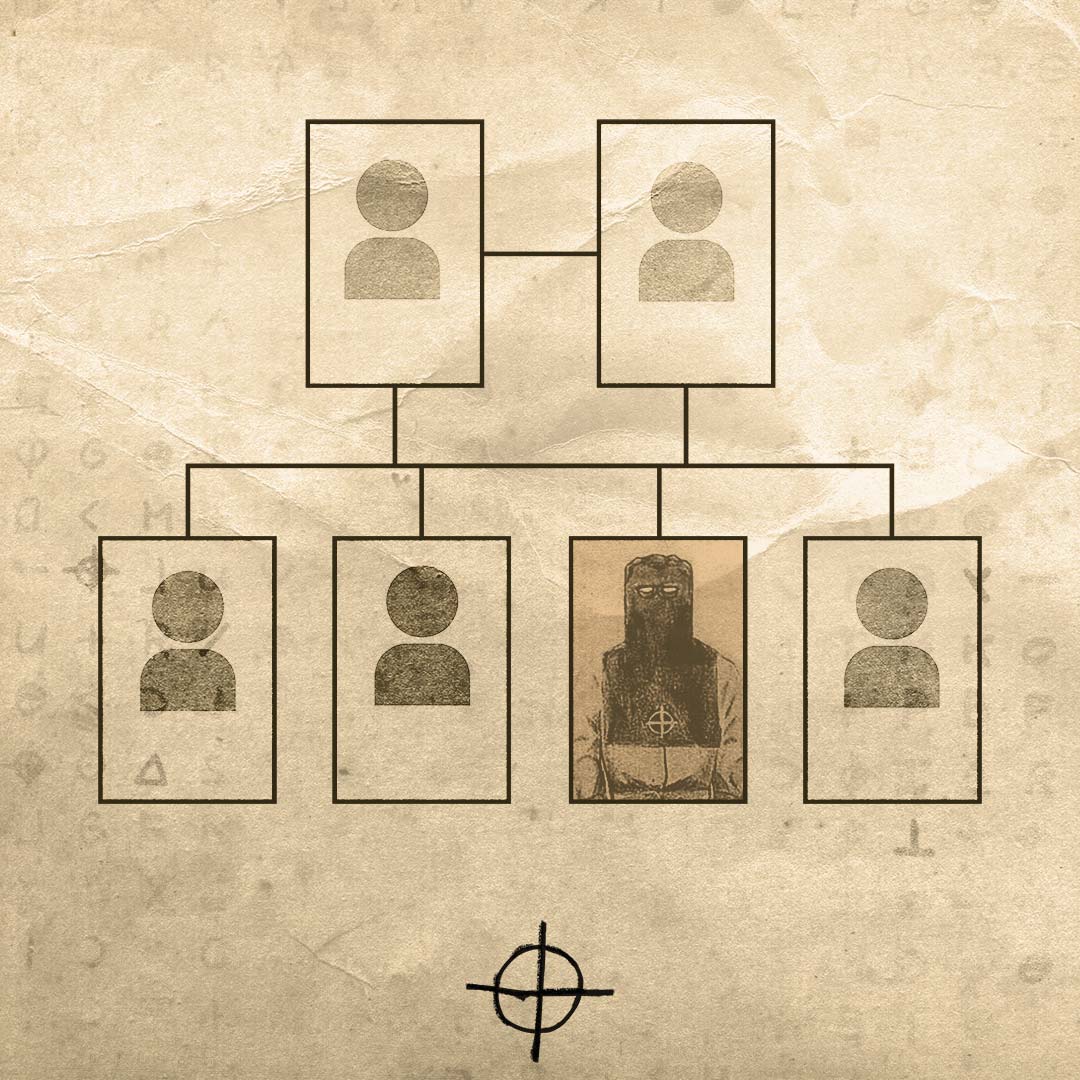
14 · Sequence
New technology brings fresh hope to the Zodiac case. But what if it’s still a dead end?

15 · Legacy
A frightening final theory.
